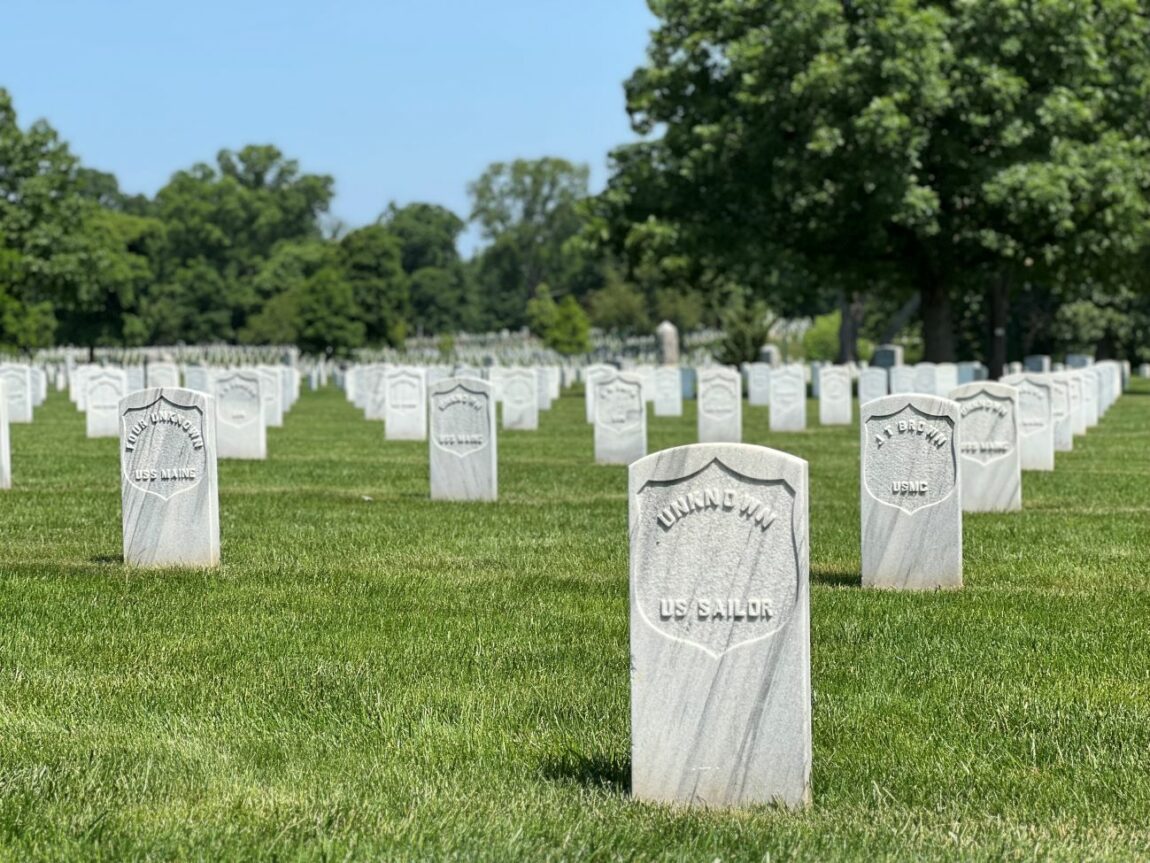
An iconic cemetery where some of the United States most notable heroes have been laid to rest.
Considered the most famous military cemetery in the United States, the Arlington National Cemetery is the final resting place for over 400,000 military veterans. These veterans served the United States from the fronts of Iraq and Afghanistan, World Wars I and II, the Korean conflict, Vietnam, the Cold War and America’s Civil War. Their eligible family members are also buried here.
Founded in 1866, the Arlington National Cemetery offers a solemn place to reflect about the sacrifices made by the United States Armed Forces in the name of the country. The Arlington national cemetery conducts between 27 and 30 funeral services every weekday and between 6 to 8 services on Saturdays.
Additionally, more than 3,000 ceremonies and memorial services are carried out every year, including national observances for Memorial Day and Veterans Day which are held at the Memorial Amphitheater. There is no better place to honor the service men and women who have fought for their country.
Arlington National Cemetery is located on a 639 acres of land that once belonged to the step-grandson of George Washington, George Washington Parke Custis. Back in 1857, Custis gave the property to his daughter, which became the house of her family and her husband, Robert E. Lee. After the Lee family left the home during the onset of the Civil War, the parcel was used for several purposes including as a camp and headquarters for Federal Troops; later it ironically became a safe haven for former slaves.
Tip: Download the Arlington National Cemetery app to easily locate gravesites, events and other points of interest throughout the cemetery.
Key sites at Arlington National Cemetery
The Tomb of the Unknown Soldier: The neoclassical, white marble sarcophagus standing atop a hill overlooking DC, is a tribute to unidentified fallen soldiers who fought during World War I, World War II, Korea and Vietnam. Guarded 24 hours a day, 365 days a year by Tomb Guard sentinels, the Tomb of the Unknown Soldier is the Arlington National Cemetery most iconic memorial, an eternal symbol of service and sacrifice.
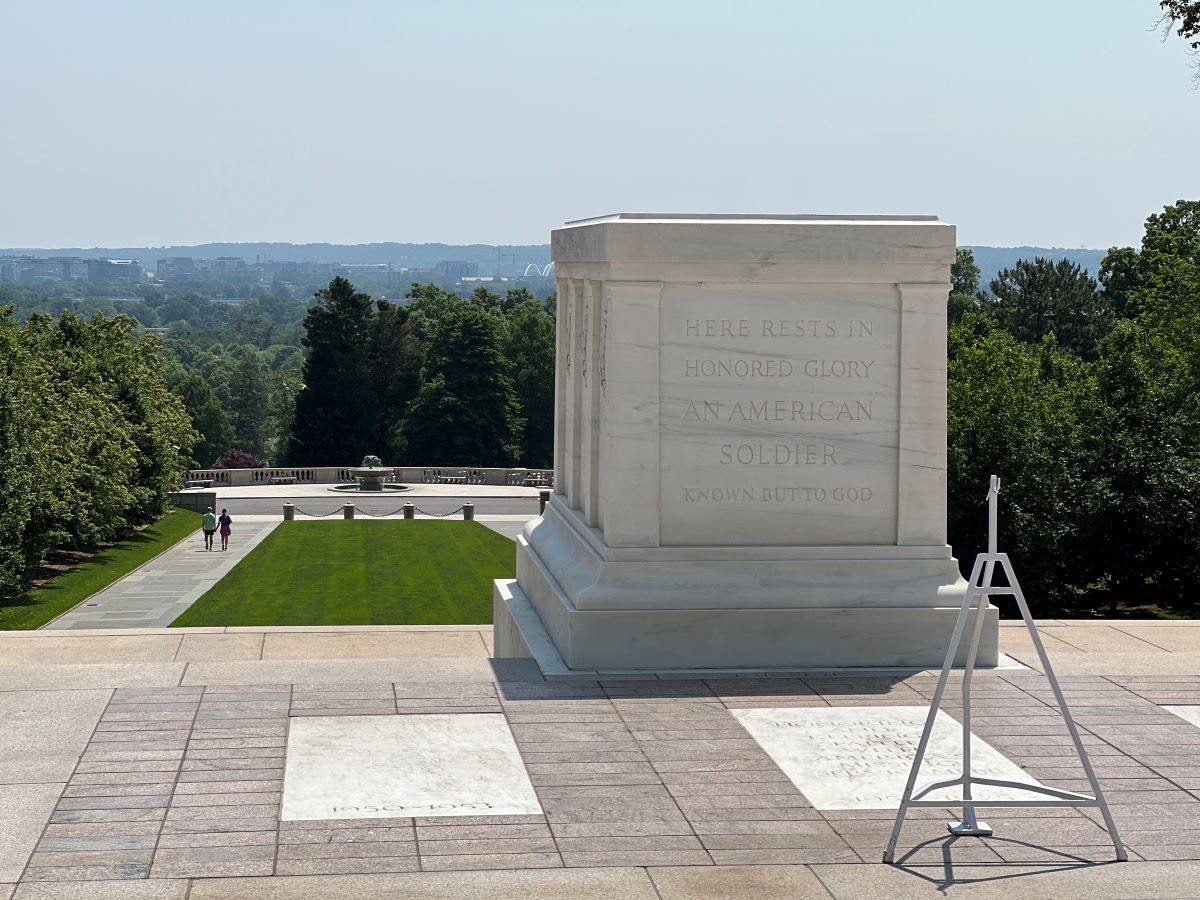
The Tomb of the Unknown Soldier. Arlington cemetery. Washington DC, US. Credit: Carry on Caro
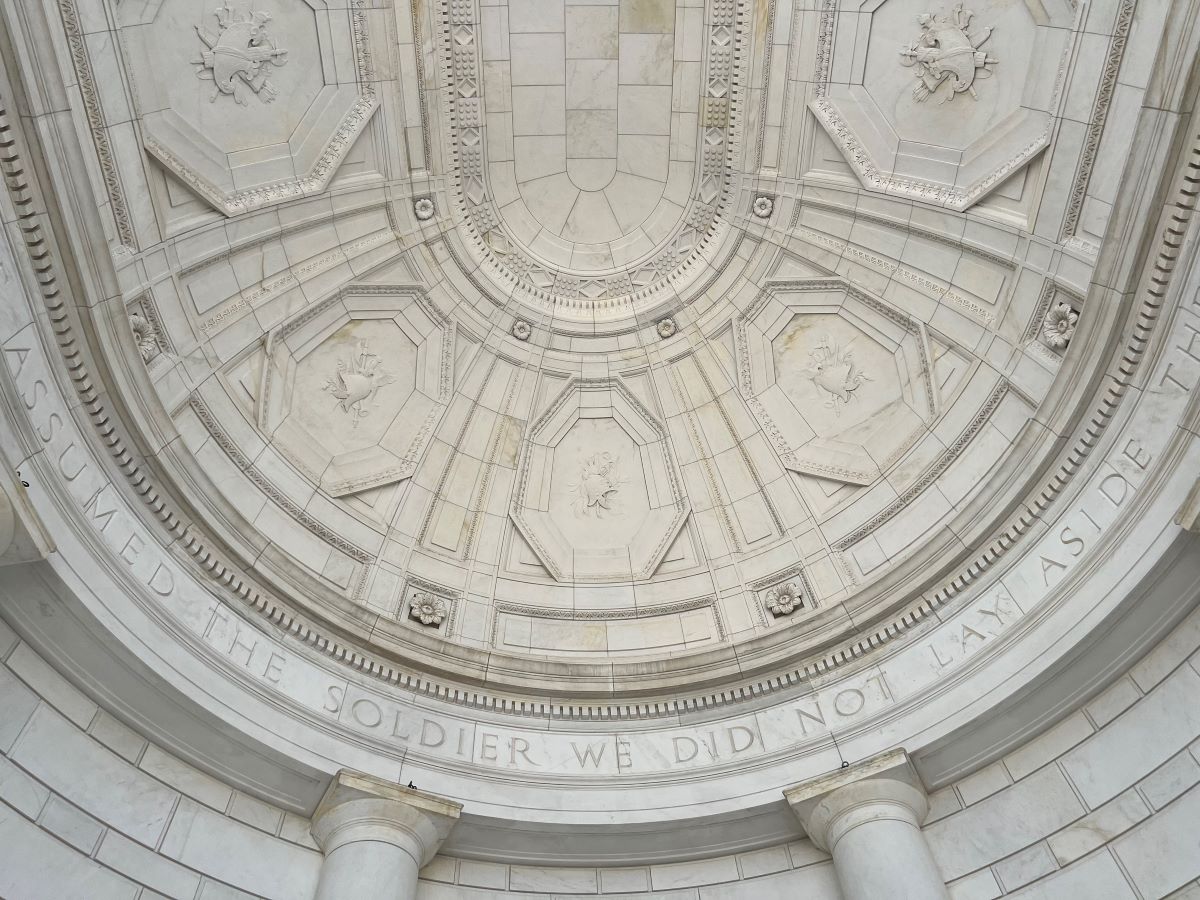
Arlington cemetery. Washington DC, US. Credit: Carry on Caro
The Changing of the Guard ritual: Every hour on the hour from October 1 to March 31, and every half hour from April 1 to September 30, visitors can witness the change of military guard at the Tomb of the Unknown Soldier. This is a very solemn ceremony that you should participate in when visiting.
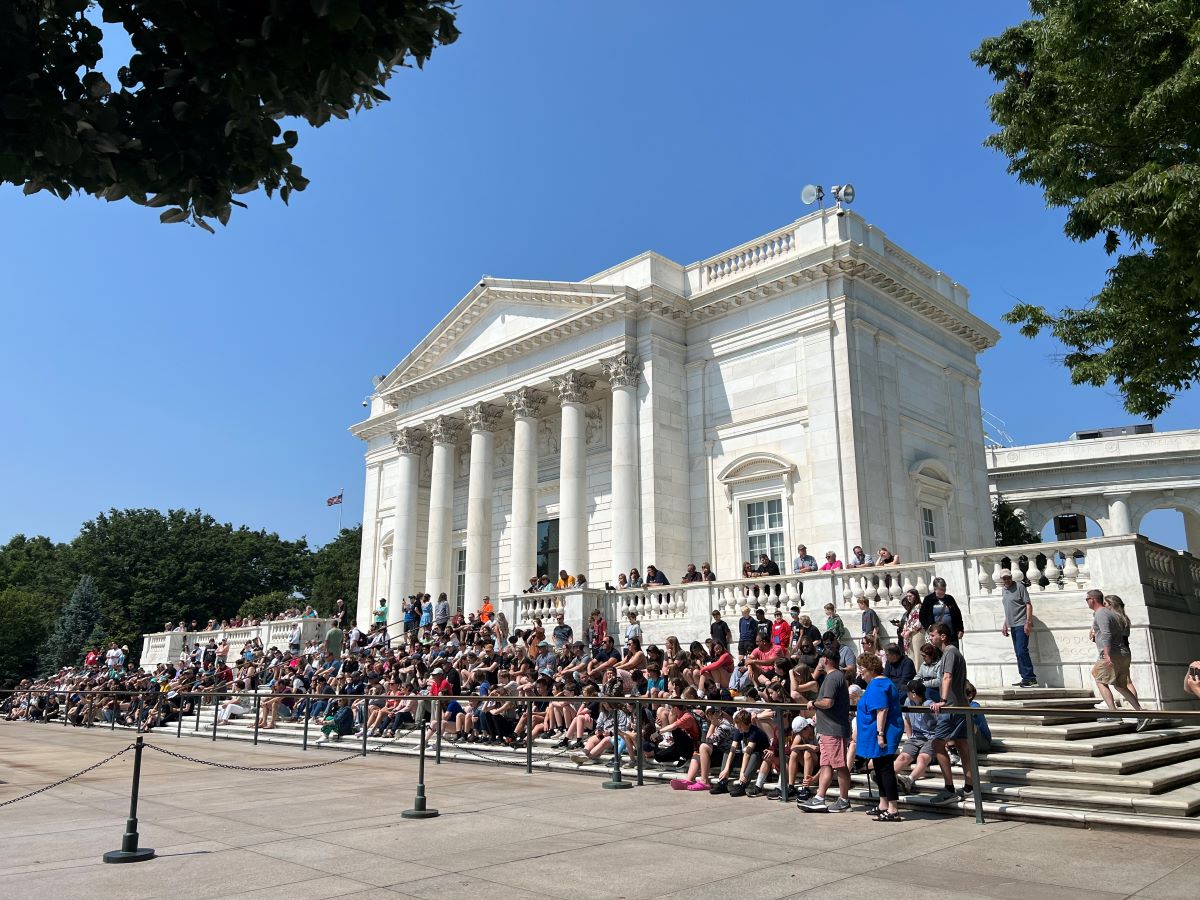
The Changing of the Guard ritual. Arlington cemetery. Washington DC, US. Credit: Carry on Caro
The gravesite of President John F. Kennedy: Only a few days after he was assassinated in an open-car motorcade on the streets of Dallas during a campaign stop, President Kennedy was buried at the Arlington national cemetery. President Kennedy is one of only two presidents (along with William Howard Taft) buried at Arlington.
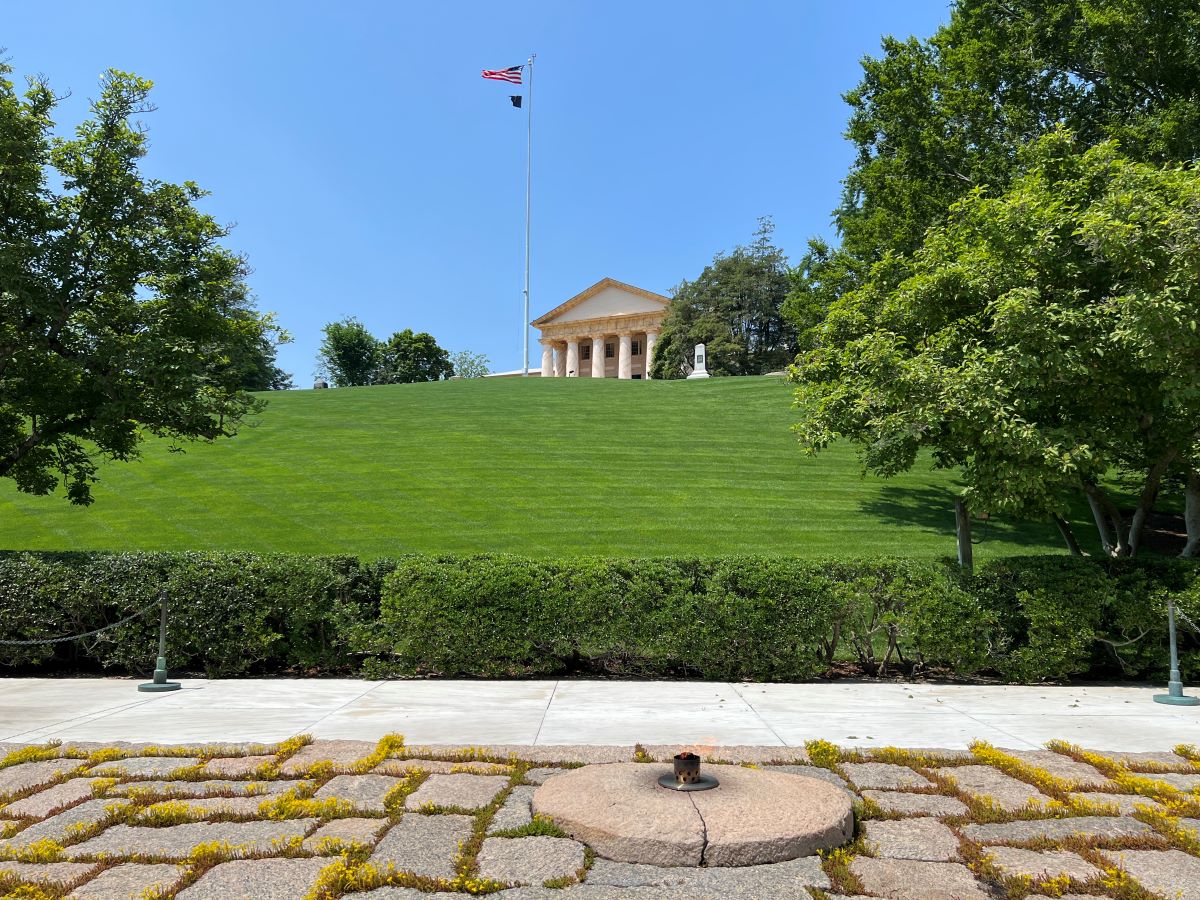
The gravesite of President John F. Kennedy. Arlington cemetery. Washington DC, US. Credit: Carry on Caro
The original Kennedy gravesite was small and surrounded by a white picket fence, however, it couldn’t withstand the large numbers of mourners visiting this grave. Three years after Kennedy’s death, more than 16 million people had visited the gravesite. To accommodate the hoards of visitors, a sturdier site was constructed. An eternal flame, lit by Mrs. Kennedy, burns from the center of a granite stone at the head of the grave.
Arlington House: Constructed between 1808 and 1818, and sitting on a hill guarding the cemetery, Arlington House is the former residence of Robert E. Lee. While the owner’s history in the Civil War is problematic, this landmark cannot be missed; take the chance to walks through both the bright and dark sides of American history by visiting the house, which is open for public tours daily. Arlington House honors Robert E. Lee including for his role in promoting peace and reunion after the Civil War.
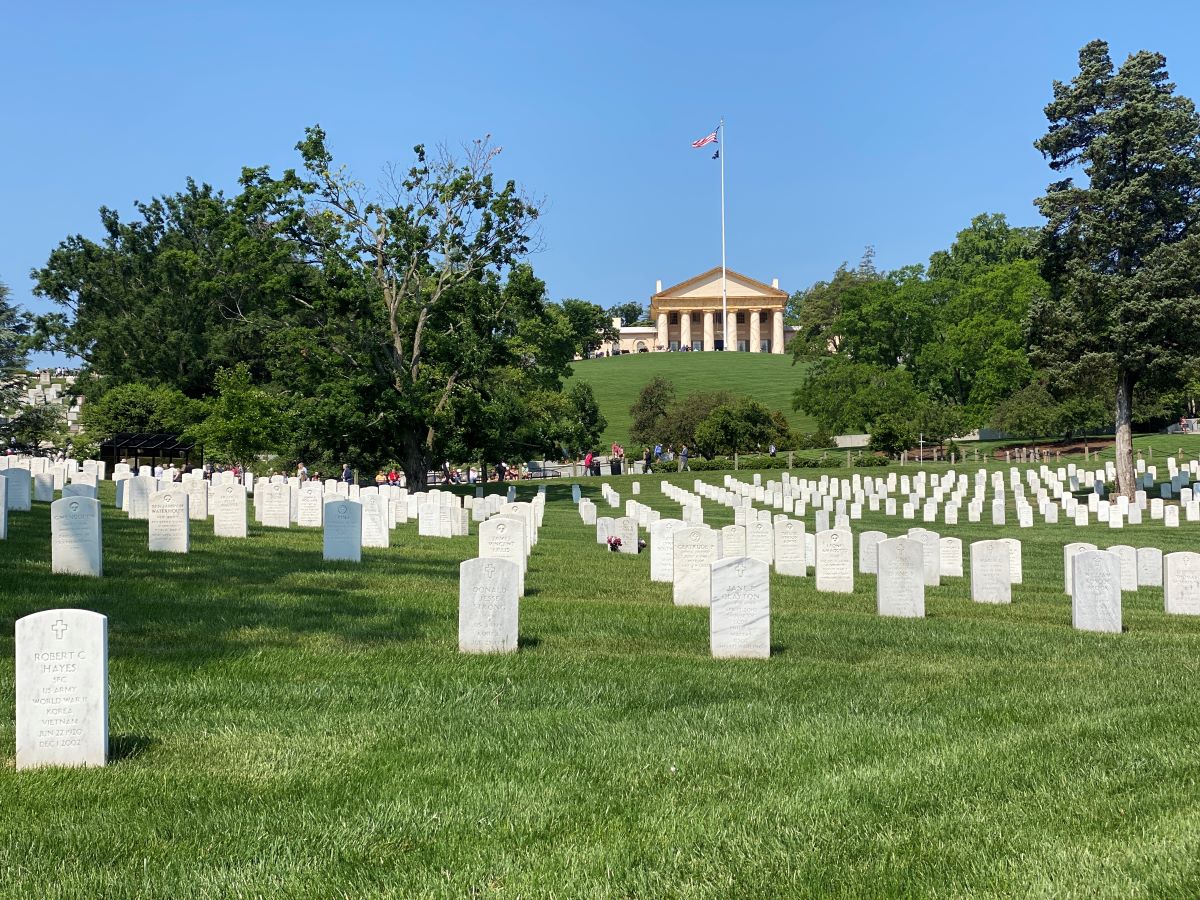
Arlington cemetery. Washington DC, US. Credit: Carry on Caro
Visitor center: Stop by for a quick visit to grab a map, use the restrooms (keep in mind that there won’t be any other restrooms here except in the Arlington House) and view exhibits. Also, here you can join the bus tours that stops at several points of interests throughout the cemetery.
Memorials: There are several memorials and monuments that have been built and are worth a visit. These include: the Spanish American War Memorial, Civil War Unknown monument, Vietnam War Memorial Tree, World War I and II memorial Trees and the Space Shuttle Memorial to name a few.
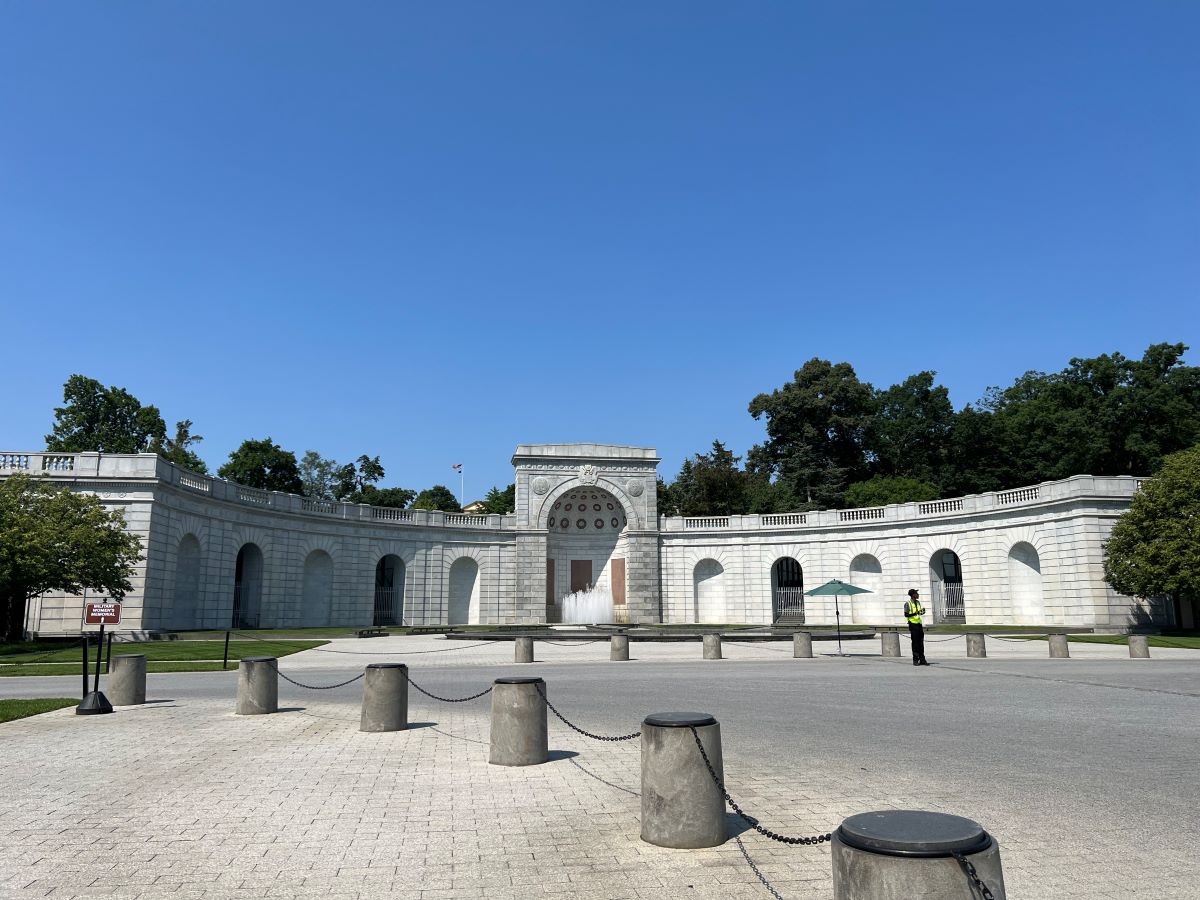
Arlington cemetery. Washington DC, US. Credit: Carry on Caro
Important tips:
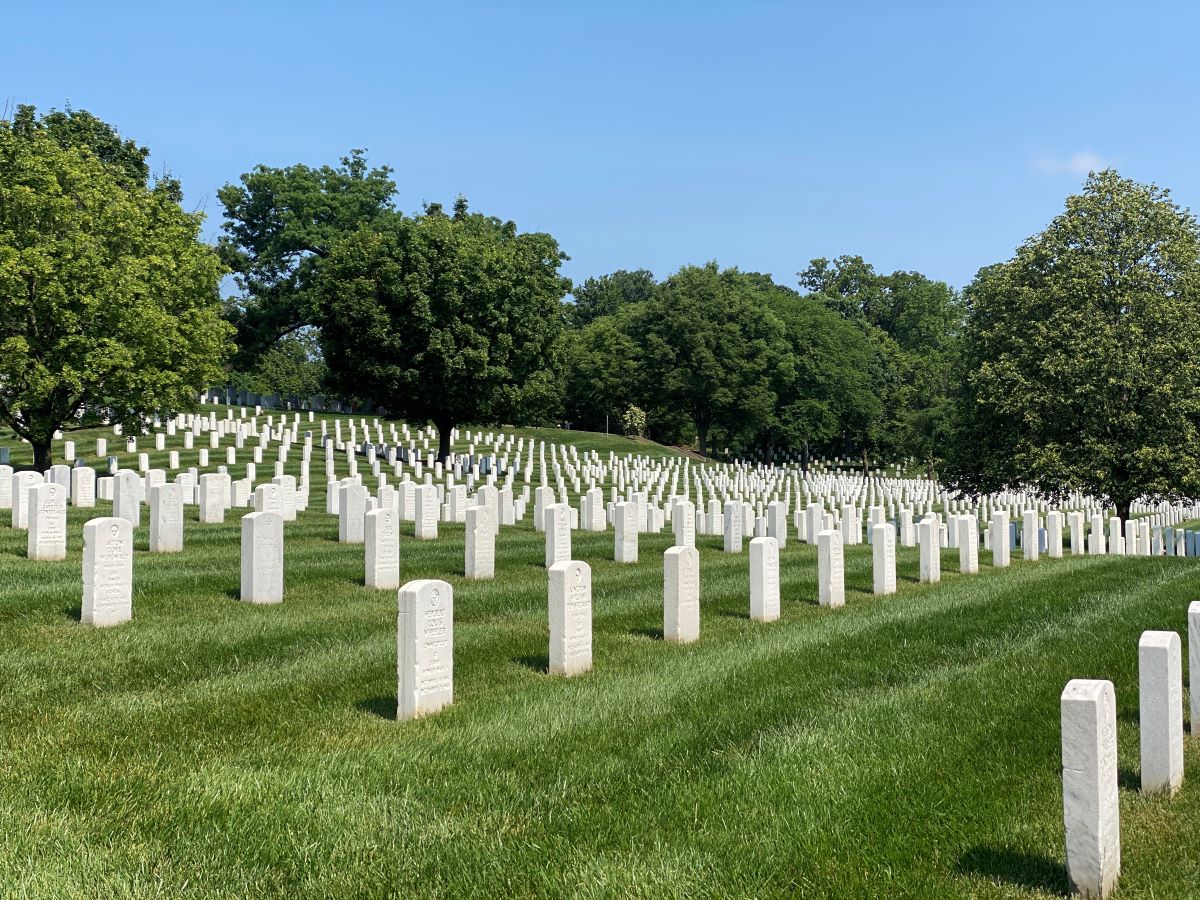
Arlington cemetery. Washington DC, US. Credit: Carry on Caro
- A visit to the Arlington National Cemetery requires lots of walking and sometimes uphill so make sure you bring comfortable shoes. It’s not a strenuous walk, but you will be on your feet the entire time.
- You will not encounter much shade when walking throughout the cemetery. Bring a hat, sunscreen and water to keep hydrated especially during DC summer months when the heat can be unbearable.
- There is a lot to see here so allow for a couple of hours.
How to get to Arlington National Cemetery
Arlington National Cemetery is located in Arlington across the Memorial Bridge. Take the blue line and get off at the Arlington Cemetery stop. There are also metrobuses that also stop here. Note that the entrance is free.
We are part of several affiliate programs including Viator and Amazon which means that we will earn a small commission at no extra cost to you if you make a purchase through the links included in this post.
